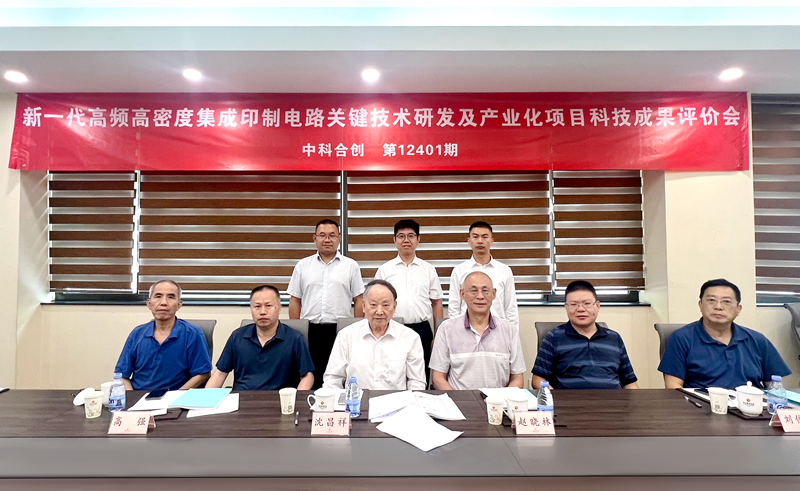
On July 24, the project "R&D and Industrialization of Key Technologies for New-Generation High-Frequency, High-Density Integrated Printed Circuits," jointly developed by the Jiangsu facility and the University of Electronic Science and Technology of China (UESTC), passed authoritative evaluation organized by Zhongke Hechuang (Beijing) Science and Technology Achievement Evaluation Center. The expert panel, led by Academician Shen Changxiang, unanimously concluded that the achievement has reached an internationally advanced level overall, with some technologies ranking among the globally leading tier. The certification number is Zhongke Pingzi [2025] No. 11135.
Amid the rapid growth of emerging industries like 5G communications, IoT, and artificial intelligence, market demand for high-frequency, high-density integrated printed circuits has surged explosively. Their performance and reliability directly impact the efficiency of various electronic products. During the project’s R&D phase, the core team led by Dr. Sun Binghe from the Technical Management Department achieved a series of innovative breakthroughs through countless experiments and tackling critical technical barriers:
? Proposed methods for forming ultra-fine circuitry and ultra-micro blind vias, along with a precise alignment technique for any-layer interconnection printed circuits, paving a new path for 3D high-density interconnects in next-gen communication terminal PCBs;
? Developed an inner-layer pattern fabrication method for laminates with enhanced surface adhesion, enabling multilayer bonding of low-roughness circuits and effectively reducing high-frequency signal transmission loss;
? Introduced an approach to reduce embedded resistor errors via in-situ monitoring of passive resistor growth, and a collaborative embedding method for stacked magnetic cores and inductor coils, significantly improving the precision and efficiency of system-integrated passive components.
These innovations have been successfully translated into productivity with remarkable outcomes: the project secured 14 invention patents and published 12 scientific papers. Related products have gained broad market recognition for their outstanding performance and have been adopted by multiple leading enterprises. Beyond generating substantial economic benefits, they have driven industry-wide technological progress, yielding significant social value.
Moving forward, both parties will deepen industry-academia-research collaboration, increase R&D investment, and accelerate the commercialization of more innovations, injecting robust momentum into the high-quality development of China’s electronic information industry.
